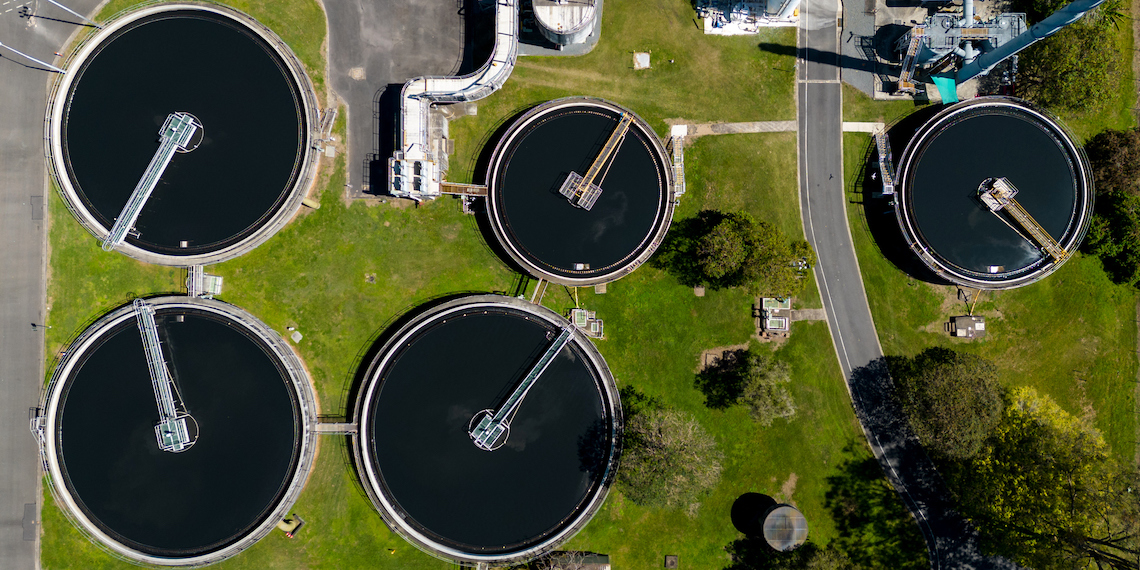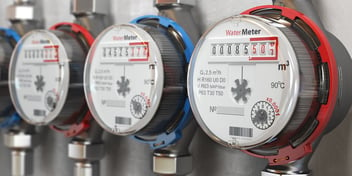How digitisation is greening the water sector

Sustainability has long been an overriding focus for the Australian water community, which is entrusted with developing forward looking strategies that address ongoing water scarcity issues.
As climate change both exacerbates many of the concerns the sector has historically faced and creates challenges, digital technologies have an increasingly important role to play in helping to meet sustainability goals.
This comes amid the evolving push towards net-zero emissions, with the sector currently embarking on a range of initiatives as it tackles its wider Scope 1, 2 and 3 emissions profile.
Across the sector, notable initial progress has been made in mitigating Scope 2 emissions via the deployment of renewable energy technologies. Meanwhile, Scope 1 emissions such as wastewater treatment emissions, and Scope 3 value-chain emissions, present increasingly complex and integrated challenges.
In these and other areas, digital technologies can potentially be harnessed to deliver long-term value.
As noted by Matt Lyon, WSP Senior Engineer for Water, the current expansion of the sector’s historical sustainability focus goes hand in hand with its ongoing adoption of digital technologies.
“Environmental sustainability is always something the sector’s had to consider,” Lyon said.
“It’s embedded in the way utilities operate, through licence conditions and socially responsible business practices.
“Now these goals are being expanded with additional sustainability and net-zero targets, and utilities are exploring how digital solutions can help them meet these challenges in the most cost-effective way.”
On the rise
Schneider Electric’s Sustainability Index 2022, based on a survey of 500 business decision-makers, notes digital technology was widely identified by respondents as “playing a key role in achieving sustainability goals”, with Australian companies ramping up investment in this area.
According to the index, business leaders are looking to the long-term benefits of further integrating sustainable practices at both a business level and across value chains as part of the ongoing digital transformation process.
Lyon said there is a growing recognition of the role digital technologies can play in achieving sustainability goals as net-zero targets draw closer.
“Over the last 18 months there’s been rapid changes in the sector, with more utilities setting net-zero targets,” he said.
“We’re also seeing utilities adopting more stringent targets on nutrient discharges to waterways out of wastewater treatment plants.
“In terms of Scope 1 emissions, more utilities are now measuring fugitive nitrous oxide and methane emissions. Going forward, we could see utilities integrating emissions monitoring with digital models for real-time emissions tracking and scenario testing.”
Duncan Whiteley, WSP Data Science and Analytics Operations Lead, said some utilities are also beginning to consider sustainability and carbon output as part of their procurement processes.
“Looking ahead, we could definitely see a directive for consultants to quantify carbon in every project put forward, including Scope 3 emissions,” he said.
To this end, he advised that WSP Australia “has taken a leadership position by committing to halving the carbon footprint of its designs and advice by 2023”.
As mandatory sustainability and emissions assessments continue to become the norm, Whiteley noted there is a “huge opportunity in this space as digital twins begin to be implemented on more projects”, providing the potential to harness project data to quantify carbon impact over the lifecycle of an asset.
“Early digital twins focused on how to get the design built or the asset maintained in a way that reduces cost and reduces variation in the design during construction,” he said.
“However, we are now integrating other data into these models to quantify other parameters, such as carbon emissions. With this rich dataset, you can then simulate infinite scenarios and optimise your design to meet your project’s objectives.”
Flexibility and innovation
SpiralData CEO Kale Needham said the broader water community is becoming increasingly proactive in both tying sustainability goals to existing practices and in undertaking new initiatives to achieve these goals.
With the core of utilities now starting out on the path to digital transformation, Needham noted the next three to five years “will be very exciting in the water space”.
“With the nature of water being precious and scarce, it aligns closely to sustainability goals,” he said. “And it also lends itself to smart technologies to help achieve these goals.
“Once we start talking about cutting waste and efficiency, this really gets into the problem space of digital transformation at a higher level, which from our perspective is where data science and big data comes in.”
In effectively harnessing data insights, utilities will need to both prioritise flexibility and have scalable processes in place that encourage innovation, Needham said.
There are a lot of traps to practically achieve better decisions through data, Needham said, and it’s important to initially identify underlying problems, rather than focusing on the solutions first.
Utilities can set about leveraging data to optimise different areas of operations, with Needham describing a scalable data lake, allowing for data storage, processing and linking, as an enabler to solve problems.
“Having an innovation process in place, with the ability to extract and push data in a range of different directions, is really important,” he said.
“In keeping the scope narrow to start with, you can then build out a data lake as you solve the problem. You’re ingesting data for each problem as required, and then expanding it as you solve each subsequent problem. That way, as the data matures and continues to grow, it’s based around your problem space.”
Broadening the scope
Underscoring the potential to progressively broaden the scope of data-driven processes, a project undertaken by WSP in conjunction with Hunter Water, harnessing machine learning to bolster Hunter’s leak detection program has evolved over time to deliver additional benefits.
Whiteley said the project – which had initially explored methodology to improve the rate of leaks found per kilometre surveyed using WSP’s machine learning model to prioritise surveys – has since expanded to consider the full asset lifecycle.
“Rather than just focusing on predicting where network leaks would occur, we looked at leaks and breaks as a whole, building a model that predicted how many failures are likely to occur and where they’re going to occur,” he said.
“This model, combined with a digital twin, provides insights into the cost of maintaining those assets long term versus the cost of renewing those assets.”
Whiteley said this automated cost-benefit analysis allows Hunter Water to not only choose the most cost-effective option, but also promotes greater efficiency and reduces resources consumption.
“They’re reducing their carbon footprint by default,” he said. “By automating this analysis for the entire network, the renewal with the highest cost-benefit is prioritised, overall reducing the number of times they’ve had to go to that site and repair a failure.”
Further, Whiteley pointed to the potential to configure this type of modelling based on carbon impact.
“That’s where it’s key to integrate datasets into a centralised data lake. Currently the system uses geospatial data and records of maintenance jobs to predict future failures," he said.
“With access to other data sources such as SCADA, we can improve the model further by providing an overall bigger picture of the network’s performance and real-time data on the rate of rise within the network.”
Sustainable irrigation
Murrumbidgee Irrigation (MI) General Manager of Information Systems Andrew Pasquetti said MI’s automation of its delivery network has been a major catalyst in achieving water savings and enabling a sustainable future for irrigation communities.
Pasquetti said this automation allows for real-time network monitoring and management, paving the way for the timely delivery of water.
“Our customer operations centre leverages the automated system’s centralised visibility, allowing operators to monitor and control MI’s infrastructure and respond rapidly to any failures,” he said.
MI is additionally utilising CCTV monitoring, business intelligence dashboards, high-resolution weather stations and field mobility software, with Pasquetti emphasising the key role of data science toolkits in achieving sustainability goals.
“Our digital twin capabilities inform asset maintenance, and will soon be expanded with the use of 3D spatial platforms,” he said.
“This will enable us to use 3D excavation technology to tailor our approach to channel cleaning activities such as desilting and de-weeding.
“We’re aiming to reduce over-excavation risks, provide more streamlined channel maintenance, and reduce heavy wear and tear. This means maintenance life will be greatly extended, and enables optimised network operation.”
Pasquetti noted that being able to effectively harness data insights has required an evolution in MI’s decision-making processes, which have shifted towards “probabilistic methods with the key downside risks appropriately managed”.
Once an issue has been identified, a range of tools are then used for data collection, cleaning, visualisation and analysis in determining how to improve system performance.
“The value an organisation can glean from data is not linear,” he said. “New datasets that are contextualised with existing datasets can unlock benefits to help solve business problems.
“MI is continuing to integrate technology, people and processes, while being open to new datasets that can unlock value for our customers through digital transformation.”
First published as ‘Digital Greening’ in Current 2023.



